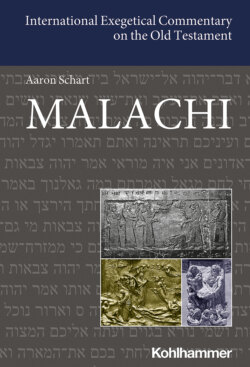Читать книгу Malachi - Aaron Schart - Страница 13
Structure of the Writing
ОглавлениеThere is no argument about the structure of the Malachi document. It contains six disputation sequences plus a superscription and a concluding admonition attached to a prediction about the future. The superscription is in 1:1; the disputation sequences are in 1:2–5; 1:6–2:9; 2:10–16; 2:17–3:5; 3:6–12; 3:13–21 [3:13–4:3 ET]; the conclusion is in 3:22–24 [4:4–6 ET].
The disputation sequences are self-contained arguments. They neither build on any preceding saying nor demand continuation through what follows. At the same time there are linkages, and it is probable that the six sayings were, from the very beginning, embedded in a meaningful structure. There are overlaps in content between various sayings, keyword links, and analogous structures.
The very first saying (Mal 1:2–5) establishes the theme of the fundamental relationship to God that shapes everything to follow, and does so through Yhwh’s declaration of love for the “you-group” identified with the patriarch Jacob. The second saying (Mal 1:6–2:9) is evidently concerned with the cult centered on the representative forms for Yhwh’s כבוד: “honor, glory” and שׁם. The third saying (Mal 2:10–16) focuses on interpersonal relationships within the family. The fourth saying (Mal 2:17–3:5) refers to interpersonal misbehavior outside the family (Mal 3:5). In the fifth saying (Mal 3:6–12), the subject is the agricultural yield, while the sixth (Mal 3:13–21 [3:13–4:3 ET]) is about just punishment for the wicked and reward for those who revere Yhwh. The order roughly follows that of the structure underlying the Decalogue: God—cult—family—community—possessions; in the Decalogue the idea of the God who punishes and rewards (sixth saying) is treated within the second commandment (Exod 20:5–6).
